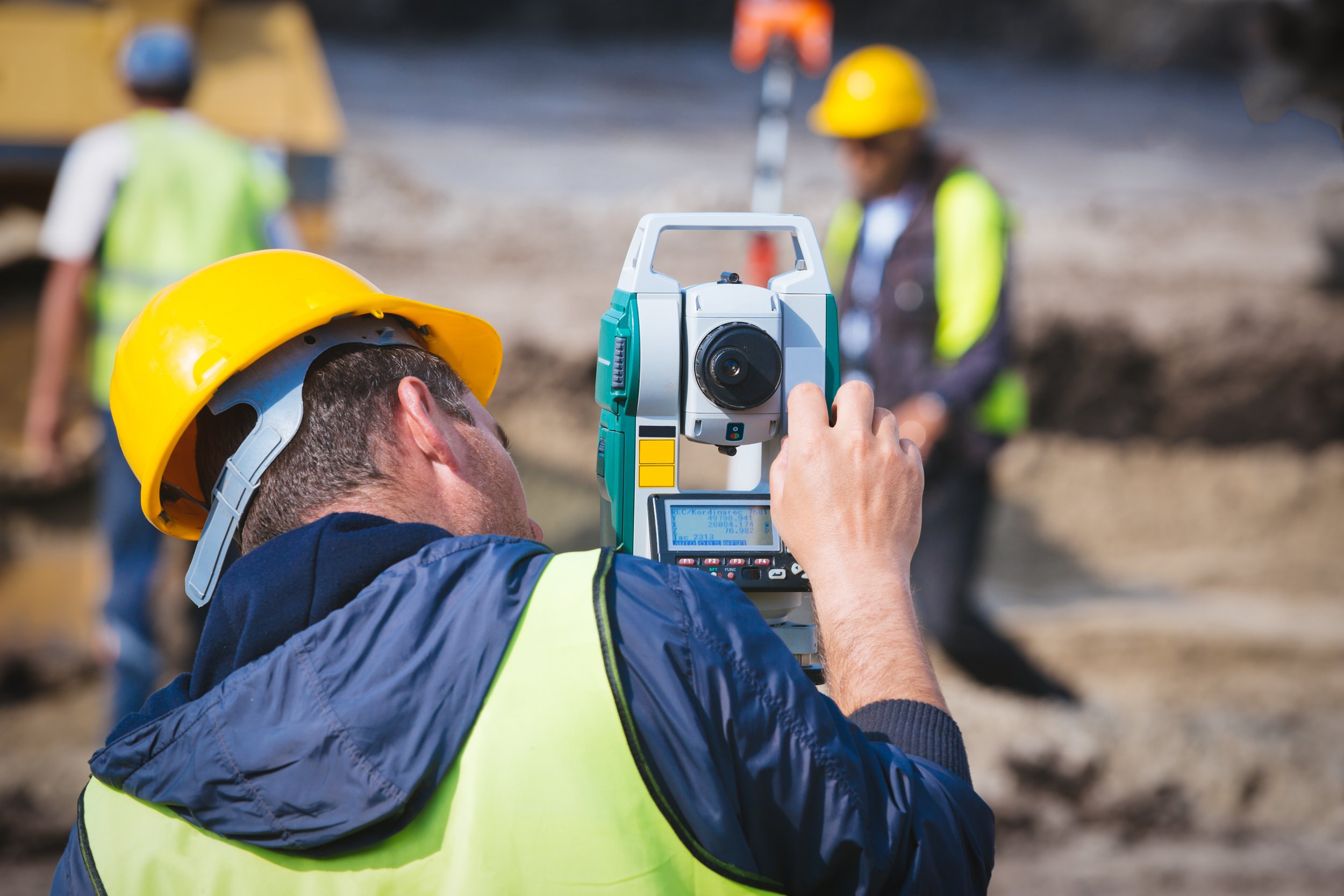TOTAL STATIONS: HOW THEY IMPROVE DATA & ACCURACY ON JOB SITES
Total Station on construction site of roadway
Have you ever been on a job site where the engineer only used a transit or theodolite to check grades? It takes them so long to set up, find their benchmark, measure the point, and calculate an elevation that you might as well send the crew home because it takes so long. Fortunately for you, most engineers these days use total stations or GPS rovers to check grades. A total station is an electronic and optical instrument that combines electronic distance measurement with angle measuring capabilities of theodolites in one unit. Total stations have enabled surveyors to get more precise and accurate data faster and easier, allowing them to quickly transfer the data from the field to the office.
What is a Digital Theodolite?
You may or may not be familiar with the term digital theodolite (modern-day equivalent to transits from the olden days). It refers to a telescope that is mounted on a base and is one of the proven, yet conventional methods used by surveyors to measure angles. It provides you with accurate horizontal and vertical angles, however, it cannot measure distance. It can be used for locating points on a line and for finding differences in elevation. This proven method of surveying requires two surveyors to work together and is way more time-consuming. However, it is less expensive than a total station and requires less training. So, there are pros and cons to the various methods so you’ll want to consider which may be a better fit for your needs.
Surveyor using a digital theodolite
What does EDM do in a Total Station?
The electronic distance measuring (EDM) instrument is one of the major components of a total station enabling it to accurately measure sloping distances from the total station to an object. EDM technology uses electromagnetic waves to measure the distance between the instrument and a handheld reflector. The accuracy of EDM is impressive: it can measure at distances of up to 5,000 feet with an accuracy of about 0.059 inches or (1.5 millimeters). EDM replaced the old method of using 100 ft. long metal tapes that had graduated marks every hundredth of a foot that surveyors would walk around with. It’s pretty easy to quickly come up with some flaws that the old method had and is not at all surprising that EDM replaced it starting back in the ’80s.
Tell me more about Total Stations
A total station combines the functionality of a theodolite with an auto-level and electronic distance meter. Total stations analyze the slope between themselves and a specific point and give position coordinates in space. Total stations can be manual or robotic. The difference being that the robotic models have a motor that allows them to be controlled remotely and can be operated by one person. Manual models require one person holding the total station and another holding a reflective sensor. For each measurement, the surveyor that is holding the total station must align the reflector in the telescope’s crosshairs. Total stations are a great tool that can quickly gather and display angle measurements, distances between points, and elevations. Although they are a more expensive option than a standard theodolite, with it comes the capability to measure more extreme distances. Some drawbacks that total stations have are that they are a line of sight only and they require a timely localization process each time they are set up.
Total stations are relied on every day in different industries for measuring angles, distances, and coordinates. Total stations are great for site layout as they are more accurate than a GPS rover. They can also be coupled with machine control systems and provide millimeter precise grading and paving accuracies. The data collected can easily be sent to the office and uploaded into various software programs, allowing for quick data analysis. We work with survey data regularly and are always available to speak with you about how to run your earthwork projects more efficiently and how a total station could help you. Contact us today!


